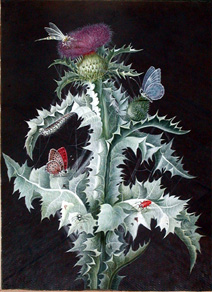 “Study
of a Thistle” (Watercolor w/Gouache & Gold Leaf on
Vellum) by Barbara Regina Dietzsh “Study
of a Thistle” (Watercolor w/Gouache & Gold Leaf on
Vellum) by Barbara Regina Dietzsh |
By
RAYMOND J. STEINER
IF ANYONE STILL needs convincing
that women artists can more than hold their own — and believe
it or not, gender bias is still alive and well in the artworld —
a visit to the present exhibit* at the Arader Galleries may help
you overcome any misconceptions that you might continue to unconsciously
harbor. Some fifty or so botanical and/or nature studies —
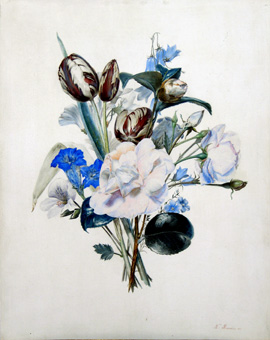 “A
bouquet of roses and tulips” “A
bouquet of roses and tulips” (Watercolor and gouache on vellum) by Domenica Monvoisin, Née Festa |
As the title of this exhibit suggests, such
work was often unsigned and it is to the credit of subsequent collectors
that effort was made to discover whose hand was actually responsible
for their creation. That women artists were slighted is beyond question;
the real question is
To begin with, being
Again, the question is
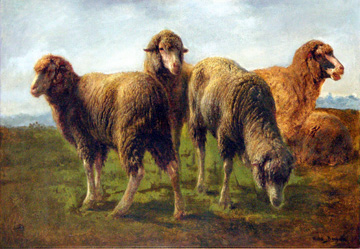 “Sheep
grazing in a meadow” (Oil on canvas) by Rosa Bonheur “Sheep
grazing in a meadow” (Oil on canvas) by Rosa Bonheur |
In the Introduction to the catalogue published
in conjunction with Arader?s
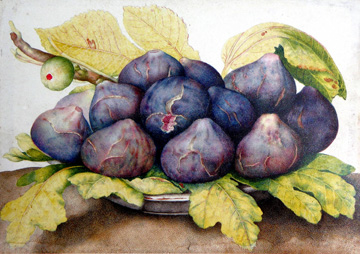 “A
Plate of Figs” (Bodycolor on Vellum) by Giovanna Garzoni “A
Plate of Figs” (Bodycolor on Vellum) by Giovanna Garzoni |
The slighting of women artists has long bewildered
me. It has always been our policy to keep gender bias out of our
pages and, at a last count, I find that I?ve profiled as many women
artists as I have men and have covered as many — if not more
— exhibits of women than those of their male colleagues. As
far back as May of 1987 — when we were publishing but a few
years — we featured the National Museum of Women in the Arts,
traveling down to Washington, D.C. to attend their inaugural exhibition.
Some years later, I wrote an essay,
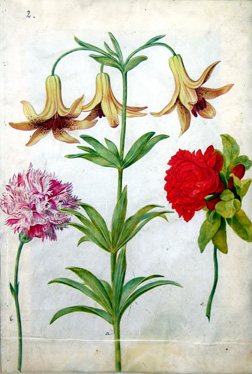 “Study
of a lily, carnation and peony” “Study
of a lily, carnation and peony”(Black lead, pen and black ink, watercolor and bodycolor on Vellum) by Maria Sibylla Merian |
As if to underscore the problem that Arader?s
exhibition is meant to remedy, I recently received a beautifully-bound,
slip-cased and over-sized volume from Prestel entitled Florilegium
Imperiale, an elegantly
lavish set of reproductions of botanical illustrations that were
originally painted for Francis I of Austria. Need it be said that
this beautiful volume reproduces the work of a male artist
— a watercolorist with the rather unfortunate name of Mathius
Schmutzer? Most have heard of — and perhaps even have perused
the pages of the many published volumes of Pierre Joseph RedoutZ?,
court painter to several French kings. By contrast, how many such
books have we seen on the likes of Giovanna Garzoni, Maria Sybilla
Merian, Johanna Helena Graffe, Barbara Regina Dietzsch, Elizabeth
Blackwell, Elizabeth Coxen Gould, Bertha Hoola Van Nooten, or Jane
Wells Loudon — just to name a few who are featured in Arader?s
Kudos to Dr. Sara Nestor, writer, photographer,
and designer of the catalogue, and to Arader Galleries for acknowledging
these women?s accomplishments by mounting this impressive exhibition.
This is one you ought not miss.
*
